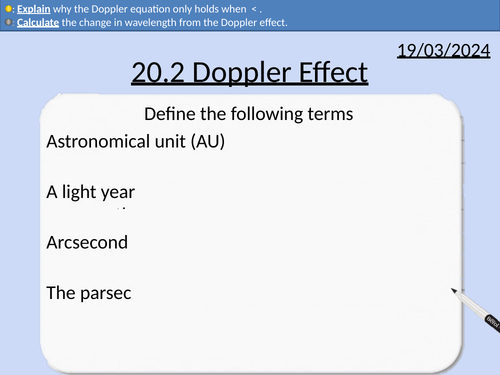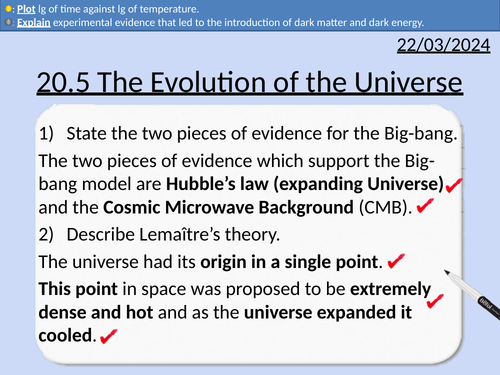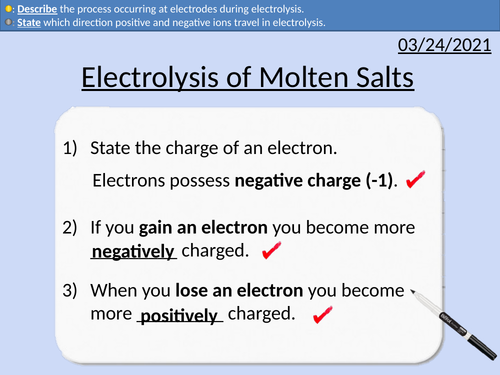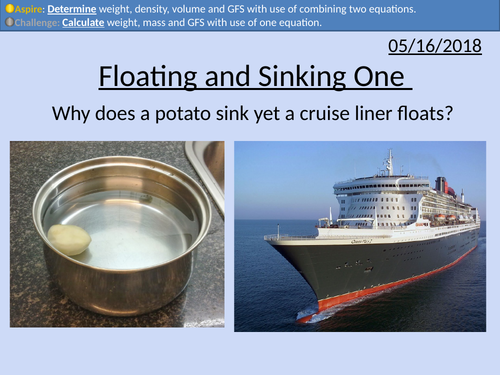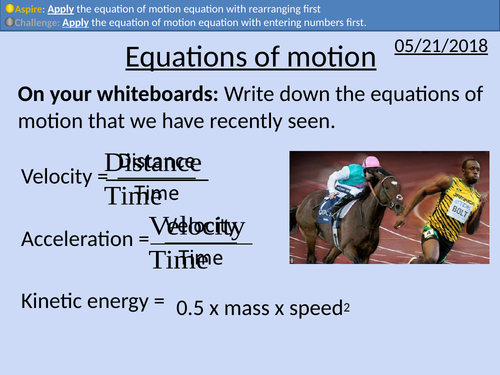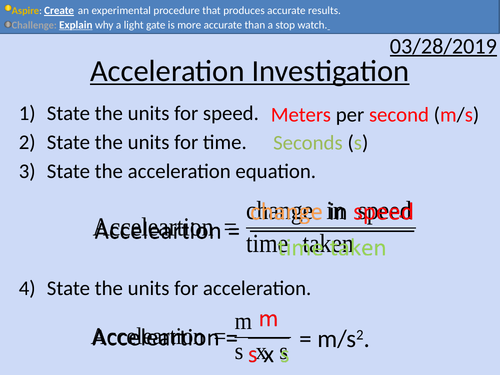484Uploads
147k+Views
65k+Downloads
All resources

A Level Chemistry: The Chemistry of Phenol
OCR A level Chemistry: 25.3 The Chemistry of Phenol
This PowerPoint is a whole lesson included with student activities, animated answers, homework questions with answers provided.
This lesson covers:
Naming phenols
Distinguishing between phenols and alcohols
Distinguishing between phenols and alkenes
Distinguishing between phenols and carboxylic acids
Phenol as a weak acid
Electrophilic reactions with phenols
Comparing and explaining the reactivity of phenols and benzene

OCR A level Physics: The Doppler Effect
OCR A level Physics: 20.2 The Doppler Effect
Module 5 Newtonian World and Astrophysics
This PowerPoint is a whole lesson included with student activities, animated answers, homework questions with answers provided.
This lesson covers:
The definition of the Doppler effect
Changes in pitch of sound waves due to relative motion
Absorption spectra and electron energy levels
Red-shift and blue-shift absorption spectra
The Doppler equation
The condition for velocity for the Doppler equation

OCR A level Physics: Astronomical Distances
OCR A level Physics: 20.1 Astronomical Distances
Module 5 Newtonian World and Astrophysics
This PowerPoint is a whole lesson included with student activities, animated answers, homework questions with answers provided.
This lesson covers:
Astronomical distances: light-years, parsec, astronomical unit
Astronomical angles - degree, arcminute, arcsecond
Parallax Angle

OCR A level Physics: Evolution of the Universe
OCR A level Physics: 20.5 Evolution of the Universe
Module 5 Newtonian World and Astrophysics
This PowerPoint is a whole lesson included with student activities, animated answers, homework questions with answers provided.
This lesson covers:
The evolution of the Universe from the Big-bang to 13.7 billion years later
The composition of the Universe
Experimental evidence for dark matter
Experimental evidence for dark energy

GCSE to A level Physics: Bridging the Gap
A short booklet of questions for students to solve over the summer between GCSE and A level.

GCSE Chemistry: Electrolysis of molten salts
This PowerPoint presentation with worked examples and student questions covers:
• Naming electrolysis experimental set up
• PANIC convention for electrodes
• Electron transfers at electrodes
• Half-equations for anode and cathode

OCR AS Physics: LDR
OCR AS Physics: LDR is a part of the Module 4: Electrons, Waves, and Photons. PowerPoint with worked examples and homework.
Materials and uses of LDRs
Creating an experiment to understand LDRs
LDRs relationship with light intensity

OCR AS level Physics: Resistance
OCR AS Physics A: Resistance is a part of the Module 4: Electrons, Waves, and Photons. PowerPoint with worked examples and homework.
Definition of an ohm.
Temperature and resistance for metallic conductors (wires)
The ohm in base SI units
I against V graphs and resistance

GCSE Physics: Resistance and Ohm's Law
This presentations covers the OCR Gateway Physics 9-1 P3.2.3 Resistance
Combining resistors in series
Combining resistors in parallel
Modeling resistance, current, and potential difference with a rope.
The relationship between potential difference and current
The relationship between resistance and current
Ohm’s law
Rearranging equations
Worked examples and student questions
Explaining how increasing current increases resistance in a metal conductor and filament lamp.

GCSE Physics: LDRs and Thermistors
This presentation covers OCR Gateway Physics 9-1 P3.2.5 LDR and Thermistors.
Circuit Symbols
Uses of LDRs and Thermistors
Plotting data and characteristic curves
Conductors, insulators, and semiconductors
Experiment into resistance and temperature of a thermistors
Investigation into resistance and light level of a LDR

GCSE Physics: Electrical Power
This presentation covers OCR Gateway Physics 9-1 P3.2.8 Electrical Power.
Definition of power
Standard form for kW and MW
The three equations for power
Rearranging electrical power equations
Derivation of P = I^2 R with subsitution
Students questions and worked solutions

GCSE Physics: Floating and Sinking
This presentation covers OCR Gateway Physics 9-1 P1.3.5 Floating and Sinking
Content Covered:
Balanced Forces
Rearranging equations
Mass and weight
Gravitational field strength
Pressure
Liquid Pressure
Difference in pressure causing up thrust
Combining two equations
Worked solutions
Exam Style Questions
Problems with answers
Demonstration

GCSE Physics: Distance-time Graphs
This presentation covers OCR Gateway Physics 9-1 P2.1.4.
Plotting of distance-time graph
Plotting of displacement-time graph
Worked example for determining gradient of a line
Comparing distance-time and displacement-time graphs

GCSE Physics: Equations of Motion
This presentation covers GCSE Physics OCR Gateway P2.1.6
Introduction of final speed^2 – initial speed^2 = 2 x acceleration x distance
Rearranging of final speed^2 – initial speed^2 = 2 x acceleration x distance
Derivation of final speed^2 – initial speed^2 = 2 x acceleration x distance
Three different methods for rearranging equations
Kinetic energy, acceleration and speed problems with answers

GCSE Physics: Paying for Electricity
This presentation covers OCR Gateway Physics 9-1 P7.2.1 Paying for Electricity
A unit of electricity being a kilo-watt hour (kWh)
Unit cost and calculating costs
Energy bills
Electrical power
Work done = Power x Time
Power = Potential Difference x Current

GCSE Physics: Speed Equation
This PowerPoint presentation with worked examples and student questions covers:
• The speed equation and units
• Rearranging Equations
• The skill of estimating

GCSE Physics: Acceleration - Planning an Experiment
This PowerPoint presentation with worked examples and student questions covers:
Choosing equipment with higher resolution
Planning an experiment to determine acceleration

GCSE Physics: Introduction to Forces
This PowerPoint presentation with worked examples and student questions covers:
Contact and Non-contact forces
Forces and accelerations
Tug of war example

GCSE Physics: Acceleration Practical
This PowerPoint presentation with worked examples and student questions covers:
• Acceleration experiment protocol
• Ensuring results are reproducible and repeatable
Spotting and removing anomalies.
Rearranging equations

GCSE Physics: Forces and Large Acclerations
This PowerPoint presentation with worked examples and student questions covers:
Road safety
Force and acceleration equations
How large forces produce dangerous accelerations


